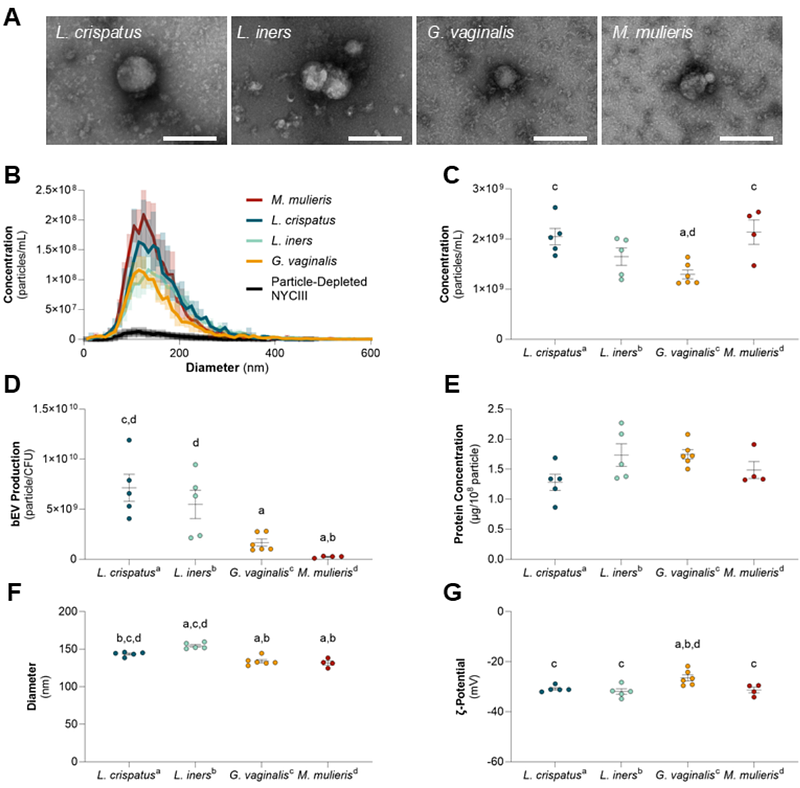Vaginal bacteria-derived extracellular vesicles diffuse through human cervicovaginal mucus to enable bacterial signaling to upper female reproductive tract tissues

Vaginal bacteria-derived extracellular vesicles diffuse through human cervicovaginal mucus to enable bacterial signaling to upper female reproductive tract tissues
Steinman, D.; Chibber, Y.; Petersen, A. P.; Zierden, H. C.
AbstractThe composition of the vaginal microenvironment has significant implications for gynecologic and obstetric outcomes. Where a Lactobacillus-dominated microenvironment is typically considered optimal, a polymicrobial environment is associated with increased risk for female reproductive diseases. Recent work has examined bacteria-derived extracellular vesicles (bEVs) as an important mode of microbe-host communication in the female reproductive tract, with bEVs exhibiting unique species- and strain-level functions that may influence women\'s health outcomes. However, in order to communicate with female reproductive tissues, bEVs must be able to penetrate the protective cervicovaginal mucus barrier. As the first line of defense against bacteria and pathogens, cervicovaginal mucus protects against infection in the female reproductive tract through steric, hydrophobic, and electrostatic interactions with foreign pathogens. Here, we hypothesize that the physical properties of bacteria-derived extracellular vesicles enable their mobility through cervicovaginal mucus and permit interactions with upper female reproductive tract tissues. We demonstrate that the barrier properties of mucus allow increased diffusion of bEVs, compared to whole bacteria. We evaluate the uptake of bEVs by, and the resulting effects on, human vaginal epithelial, endometrial, and placental cells, highlighting potential mechanisms of action by which vaginal dysbiosis contributes to gynecologic and obstetric diseases. Our work demonstrates the ability of bEVs to mediate female reproductive diseases and highlights their potential as therapeutic modalities for treating dysbiosis and dysbiosis-associated diseases in the female reproductive tract.